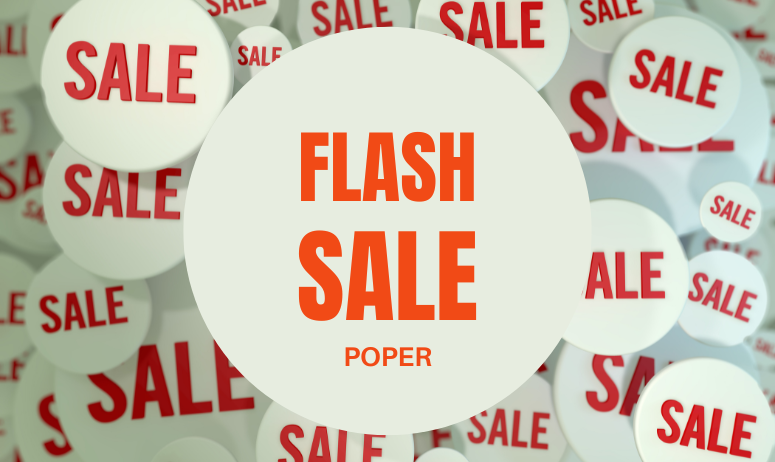In the world of e-commerce, flash sales are the perfect storm: they create urgency, fuel excitement, and drive immediate action.
Flash sales have become a staple in the e-commerce landscape, offering businesses a powerful tool to boost sales, clear out inventory, and engage customers. The success of a flash sale hinges on creating a sense of urgency and scarcity, compelling customers to make quick purchasing decisions. This is where popups come into play.
Why Flash Sales Work
Flash sales capitalize on the psychology of urgency and scarcity, two key drivers that can significantly influence consumer behavior. When customers perceive that a product is available for a limited time or in limited quantities, they are more likely to make a purchase to avoid missing out. This "fear of missing out" (FOMO) can lead to a surge in sales and a heightened sense of excitement.
The Anatomy of a High-Converting Flash Sale Popup

Creating an effective flash sale popup requires a thoughtful blend of design, messaging, and user experience. A high-converting popup captures attention instantly, delivers a clear value proposition, and compels the user to take immediate action. Let's break down the essential elements that make a flash sale popup successful.
Design Essentials
Visual Appeal: Color Schemes, Fonts, and Imagery
The visual design of a popup plays a crucial role in attracting and retaining user attention. Bright and contrasting colors can make key elements like the call-to-action (CTA) button stand out, while consistent branding helps reinforce brand identity. Choose a color scheme that aligns with your brand but also creates a sense of urgency—think bold reds, energetic oranges, or striking yellows.
Fonts: Use clear and legible fonts that are easy to read at a glance. Avoid overly decorative fonts that can be hard to read quickly.
Imagery: Include high-quality images that are relevant to the products on sale. Product images can help customers visualize what they're purchasing, while lifestyle images can evoke emotions and set the tone.
Layout Considerations: Clarity and Simplicity
A cluttered popup can overwhelm users and lead to higher bounce rates. Keep the layout clean and focused, highlighting the essential information. The message should be clear, and the CTA should be easy to find. Use whitespace effectively to separate elements and avoid cramming too much information into a small space.
Headline: The headline should be bold and direct, conveying the main message of the popup, such as "50% Off Flash Sale Today Only!"
Subheadline: Provide additional context or details, like "Limited Stock Available—Act Fast!"
CTA Button: The CTA should be the most prominent element on the popup, encouraging immediate action. Use action-oriented phrases like "Shop Now," "Get Deal," or "Grab It Before It's Gone!"
Mobile Optimization: Ensuring Responsiveness and Quick Loading
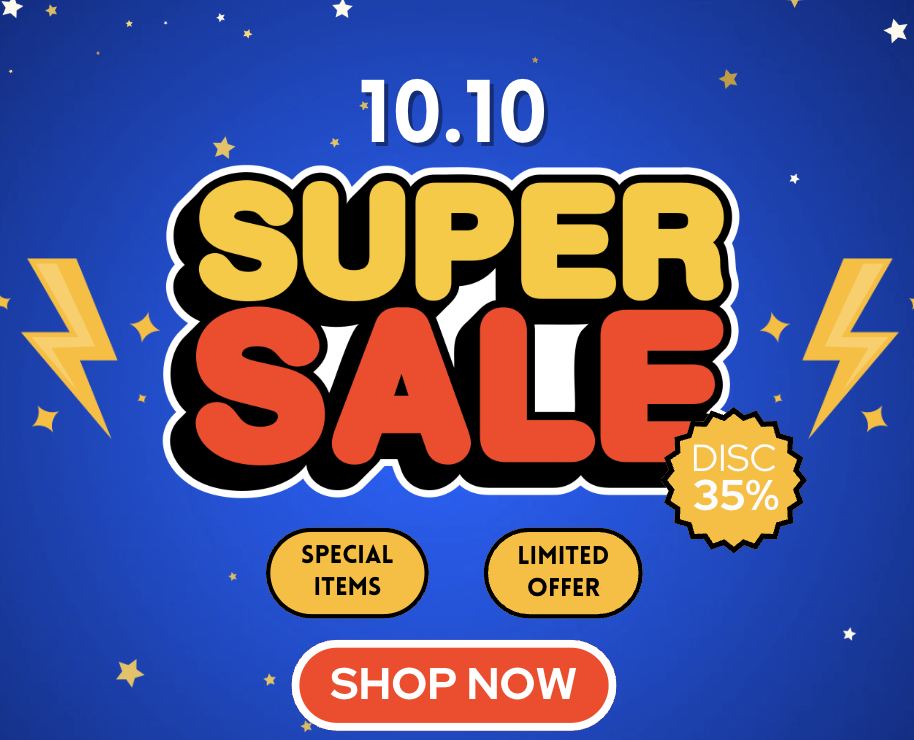
With a significant number of users shopping on mobile devices, ensuring your popups are mobile-optimized is crucial. Responsive design ensures that popups look good and function well on screens of all sizes.
Fast Loading: Mobile users expect fast-loading pages. Optimize images and minimize code to ensure the popup loads quickly.
Touch-Friendly Design: Ensure that buttons and interactive elements are large enough to be easily tapped on a touchscreen. Avoid placing elements too close together to prevent accidental clicks.
| Element | Considerations |
|---|---|
| Color Scheme | Bold, high-contrast colors to create urgency |
| Fonts | Clear, legible fonts; avoid overly decorative styles |
| Imagery | High-quality product or lifestyle images |
| Layout | Clean, focused, with effective use of whitespace |
| Headline | Bold and direct, conveying the main message |
| Subheadline | Additional context or details, like urgency or limited stock |
| CTA Button | Prominent, action-oriented, easy to tap on mobile devices |
Crafting the Perfect Message
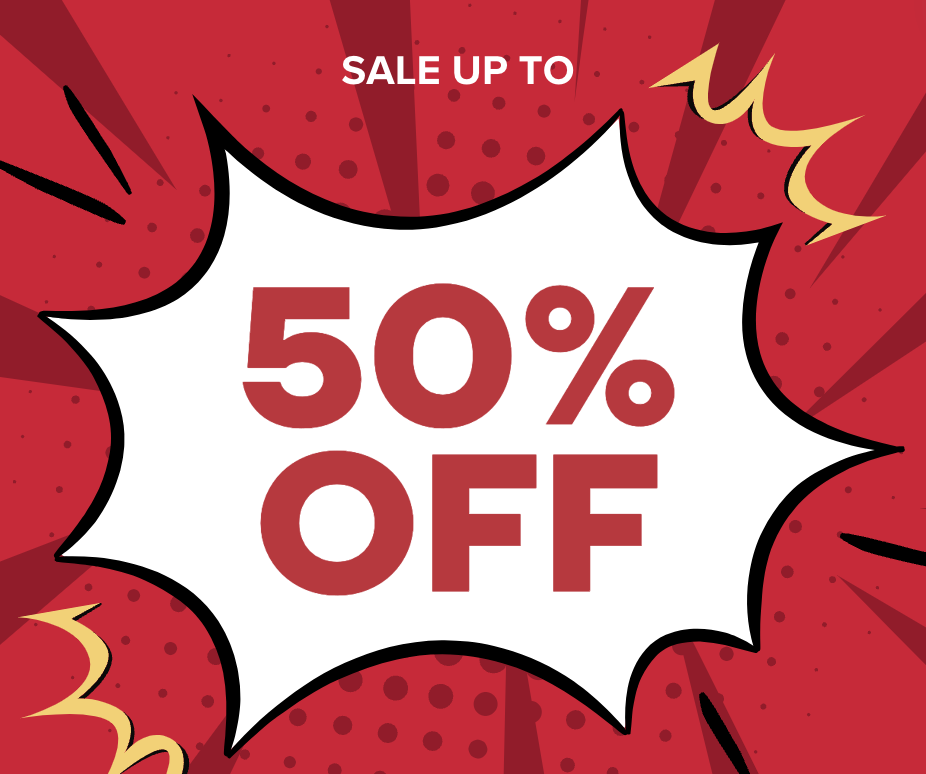
The message within a flash sale popup is just as important as its design. A well-crafted message can effectively communicate the urgency and value of the offer, compelling customers to take action. Let's delve into the key components that make up a compelling popup message.
| Component | Tips and Examples |
|---|---|
| Headline | Short, direct; use urgent language (e.g., "Flash Sale! 50% Off!") |
| Value Proposition | Specific benefits; tailor to audience (e.g., "Save 70% on top brands") |
| CTA | Clear, action-oriented; visible and easy to click (e.g., "Shop Now") |
Creating Popups for Flash Sales Using Poper
Creating effective flash sale popups with Poper is straightforward and efficient, thanks to its intuitive features and user-friendly interface. Here's a simple guide to get you started.
Step 1: Sign Up and Set Up
Start by signing up for an account on Poper's website and logging into the dashboard. This is where you'll manage all your popups and track their performance.
Step 2: Pick a Template
Poper offers a variety of customizable templates perfect for flash sales.
Open your web browser and go to the Poper website.
Login to your Poper account using your credentials.
On your dashboard, click on the “+ New Popup” button to create a new popup.
Choose one that matches your brand's style and the vibe of your sale. You can tweak colors, fonts, and images to make it your own.
Step 3: Customize Your Popup
Use the drag-and-drop builder to add your logo, catchy headlines, and a compelling message. Highlight the urgency of the sale with a bold statement like "Flash Sale: 50% Off Today Only!" Make sure your call-to-action (CTA) button is clear and enticing, like "Shop Now" or "Grab the Deal!"
Step 4: Set Up Targeting and Triggers
Poper lets you target specific audiences, like new visitors or returning customers. You can also set triggers to decide when your popups appear. For example, you might show a popup as soon as someone lands on your site, when they scroll halfway down a page, or if they try to leave.
Step 5: A/B Testing
Poper's A/B testing feature allows you to experiment with different popup versions to see which one performs best. You can test various headlines, images, and CTA texts to find the most effective combination.
Step 6: Monitor and Optimize
After launching your popups, keep an eye on how they're performing. Poper's analytics will show you key metrics like views, clicks, and conversions. Use this data to make any necessary tweaks and keep your popups fresh and effective.
Timing and Triggers: The Art of Perfect Popup Timing
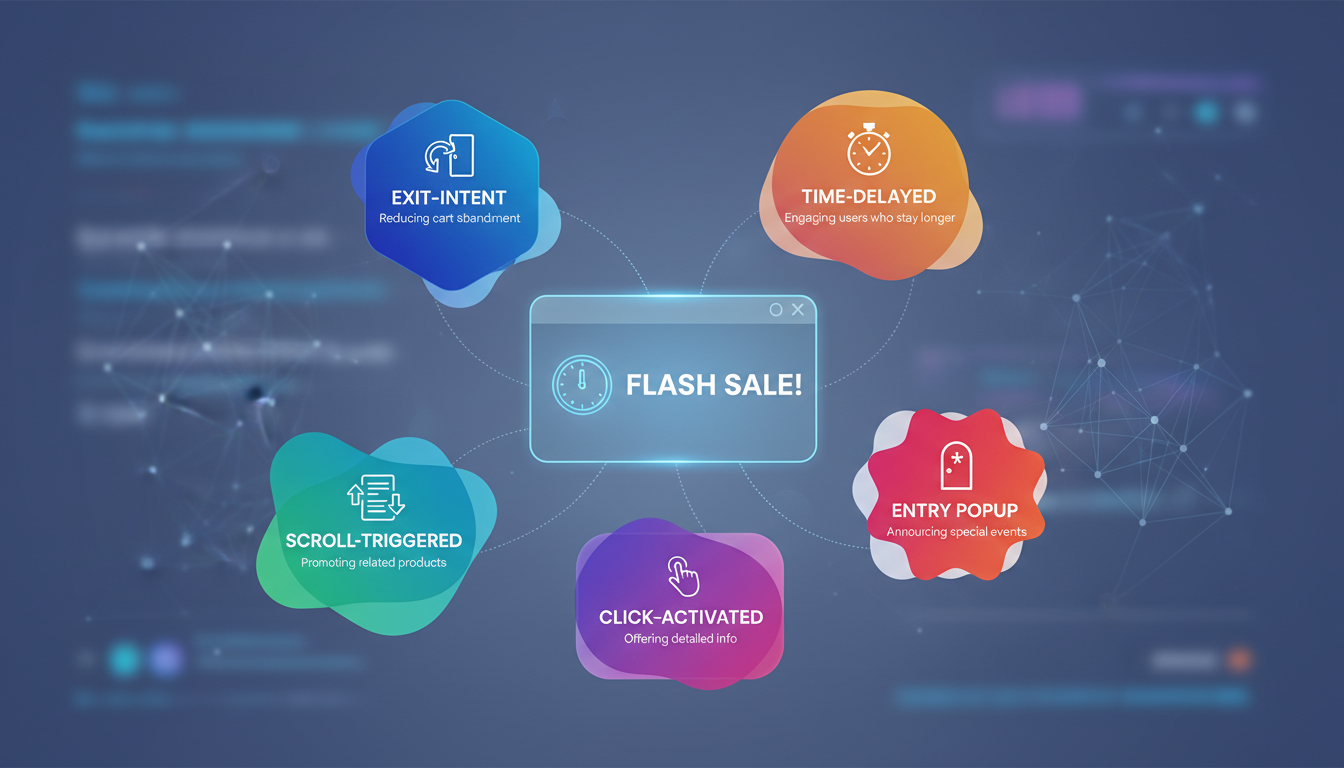
Timing is everything when it comes to flash sale popups. Displaying popups at the right moment can significantly increase their effectiveness by reaching customers when they are most likely to engage. In this section, we'll explore the best practices for timing and the types of triggers you can use to ensure your popups are perfectly timed.
| Trigger Type | Description | Best Used For |
|---|---|---|
| Exit-Intent | Appears when user is about to leave | Reducing cart abandonment, offering deals |
| Time-Delayed | Appears after a set time on the page | Engaging users who stay longer |
| Scroll-Triggered | Appears when user scrolls a certain percentage | Promoting related products or offers |
| Click-Activated | Triggered by clicking a specific link or button | Offering detailed info or discounts |
| Entry Popup | Appears immediately upon site entry | Announcing flash sales or special events |
Personalization: Making Every Popup Count
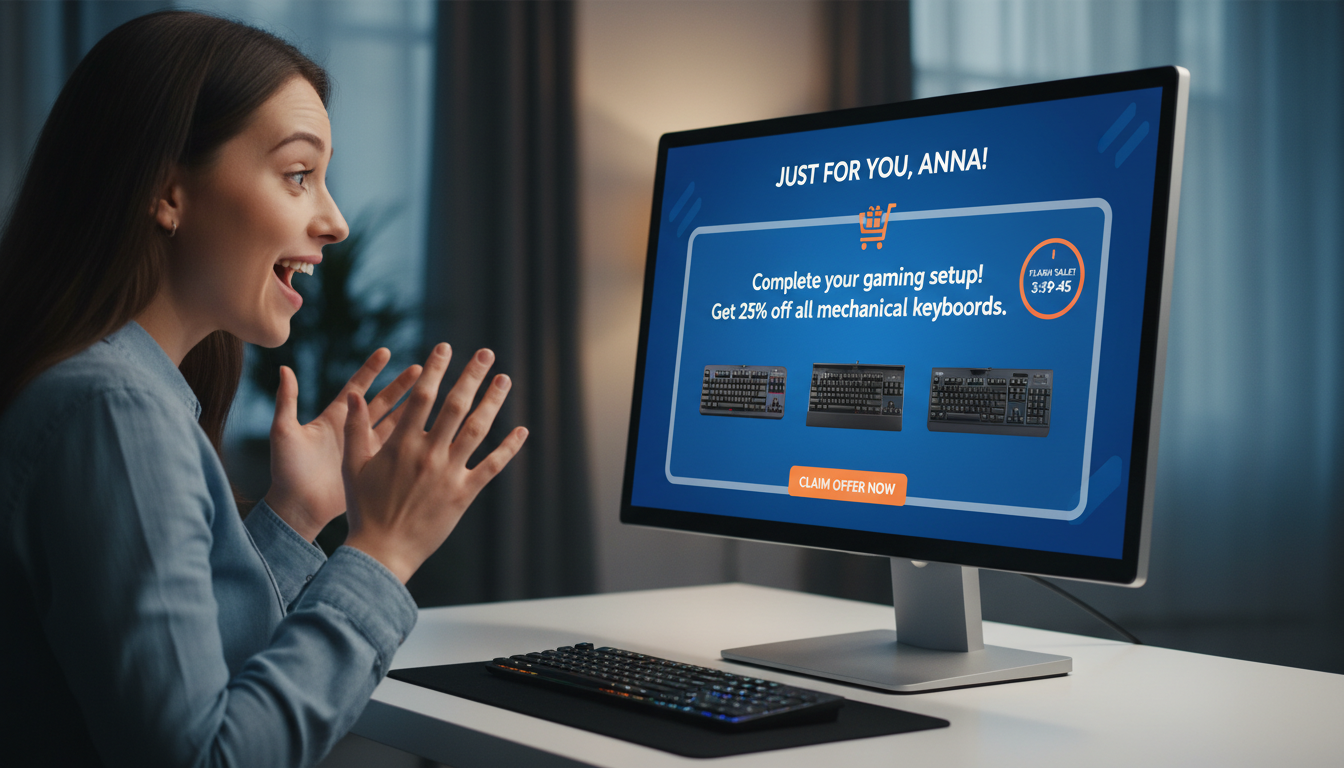
Personalization is a powerful strategy in digital marketing, especially in the context of flash sales. Tailoring popups to individual users not only enhances the user experience but also significantly increases the likelihood of conversion. This section explores how to leverage customer data and dynamic content to create highly personalized popups that resonate with each visitor.
| Personalization Type | Example |
|---|---|
| Past Purchase History | "Complete your collection with our new arrivals!" |
| Browsing Behavior | "Don't miss out on these deals for items in your cart!" |
| Demographic Data | "Exclusive offer for [City] residents: 20% off today!" |
| Product Recommendations | "You might also like these new tech gadgets!" |
| Special Offers | "Welcome back! Enjoy 10% off on your next purchase!" |
Boosting Urgency and Social Proof
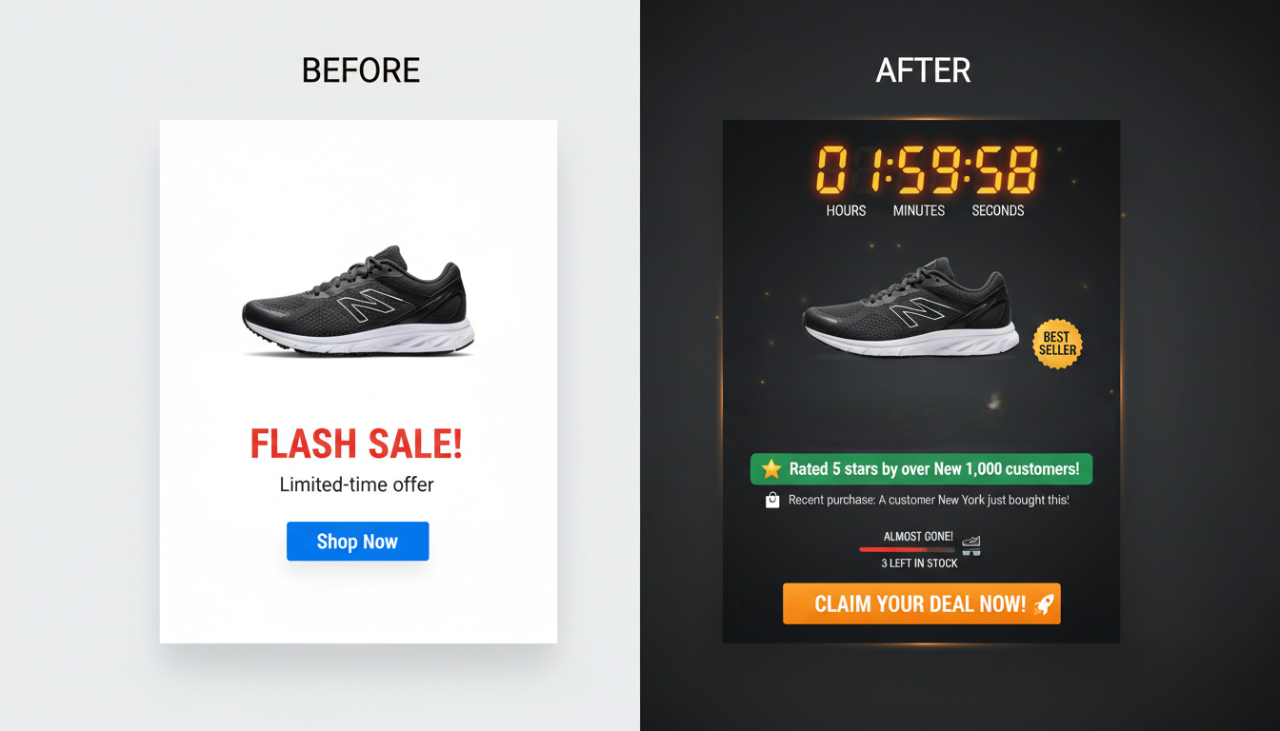
Creating a sense of urgency and leveraging social proof are powerful psychological triggers that can significantly increase conversions during a flash sale. Popups that emphasize these elements can prompt immediate action and build trust among customers. In this section, we'll explore effective strategies for incorporating urgency and social proof into your flash sale popups.
| Element | Strategy | Example Message |
|---|---|---|
| Urgency | Limited Time Offers, Stock Indicators, Exclusive Discounts | "Only 2 hours left to save 50%!" |
| Social Proof | Recent Purchases, Customer Reviews, Best Seller Badges | "Rated 5 stars by over 1,000 customers!" |
The Future of Flash Sale Popups
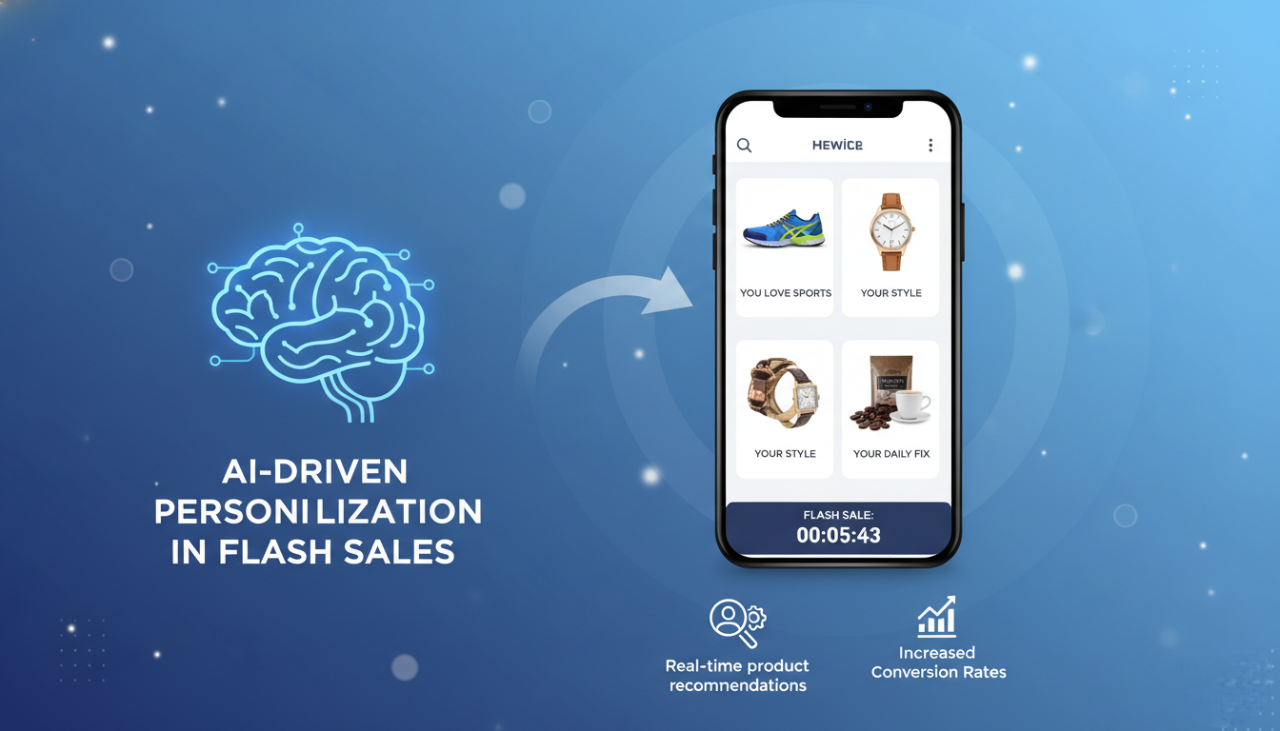
As e-commerce continues to evolve, so does the technology and strategy behind flash sale popups. Emerging trends and innovations are shaping the future of digital marketing, offering new ways to engage customers and drive sales. In this section, we'll explore the latest advancements in popup technology and what businesses can expect moving forward.
Emerging Trends in Popup Technology
AI-Driven Personalization
Artificial Intelligence (AI) is revolutionizing the way businesses interact with customers. AI-driven personalization allows for real-time customization of popup content based on user behavior, preferences, and historical data.
Dynamic Content: AI can analyze a user's browsing history and automatically display products or offers that align with their interests. For example, a customer who frequently browses tech gadgets might see popups featuring the latest electronics.
Predictive Analytics: By leveraging AI, businesses can predict customer behavior, such as the likelihood of making a purchase or abandoning a cart. Popups can then be tailored to address these predictions, offering discounts or incentives at crucial moments.
Interactive and Gamified Popups
Interactive and gamified elements in popups are becoming increasingly popular. These features not only enhance user engagement but also make the shopping experience more enjoyable and memorable.
Spin-to-Win Games: Popups that include gamified elements like spin-to-win wheels can entice users with the chance to win discounts or freebies. This interactive approach can increase engagement and conversions.
Quizzes and Surveys: Interactive quizzes can guide customers to products that best suit their needs. For example, a skincare brand might use a quiz to recommend products based on skin type and concerns.
Augmented Reality (AR) Integration
AR technology is making its way into e-commerce, offering customers a more immersive shopping experience. Popups integrated with AR can provide virtual try-ons, allowing customers to visualize products in real-time.
Virtual Try-Ons: Customers can use their smartphone cameras to see how products like clothing, accessories, or makeup would look on them. This can significantly reduce the uncertainty associated with online shopping and boost confidence in purchasing decisions.
Product Visualizations: For home decor or furniture, AR popups can show how an item would look in a customer's space, helping them make more informed choices.
Preparing for Future E-commerce Challenges
As the digital landscape evolves, businesses must adapt to new challenges and opportunities. Staying ahead of the curve requires a forward-thinking approach and a willingness to embrace new technologies.
Data Privacy and Security: With increasing concerns about data privacy, businesses must prioritize secure data handling and compliance with regulations like GDPR and CCPA. Transparent data practices will be essential in maintaining customer trust.
Omnichannel Integration: The future of e-commerce lies in a seamless omnichannel experience. Popups should be integrated across various platforms, including websites, mobile apps, and social media, to provide a consistent user experience.
Customer Experience Focus: As competition intensifies, the quality of the customer experience will be a key differentiator. Personalized, engaging, and hassle-free experiences will become even more critical in retaining customers.
FAQs
How can I prevent popups from annoying my customers?
To prevent popups from being annoying, ensure they are not intrusive and can be easily closed. Limit how often they appear to the same user and trigger them at appropriate times, such as during peak engagement or when the user shows exit intent.
What’s the best time to display popups during a flash sale?
The best times to display popups are when users are most likely to engage, such as upon entering the site, before exiting, or after spending a certain amount of time on a product page. Adjust timing based on user behavior and site analytics for optimal results.
How do I measure the effectiveness of my flash sale popups?
Measure effectiveness by tracking metrics like conversion rate, click-through rate (CTR), bounce rate, and engagement metrics such as time spent on the site. These indicators help evaluate performance and identify areas for improvement.
What are the top design tips for mobile popups?
For mobile popups, ensure they are responsive with easy-to-tap buttons and simple, readable fonts. Keep content concise, ensure fast loading times, and include a clear close button for user convenience.


